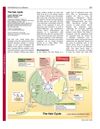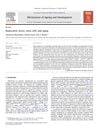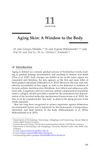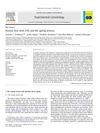Deletion of the Developmentally Essential Gene ATR in Adult Mice Leads to Age-Related Phenotypes and Stem Cell Loss
June 2007
in “
Cell Stem Cell
”
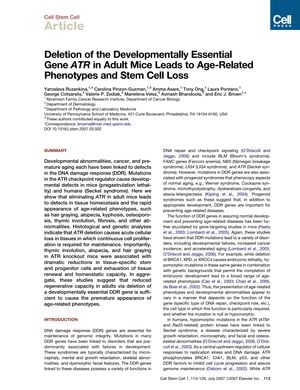
TLDR Removing the ATR gene in adult mice causes rapid aging and stem cell loss.
The document describes a study that investigated the consequences of deleting the ATR gene, which is crucial for DNA damage response, in adult mice. The study found that ATR gene deletion led to rapid onset of age-related phenotypes such as hair graying, alopecia, kyphosis, osteoporosis, and stem cell loss in various tissues. The research involved different numbers of mice for various analyses: 6-12 mice for thymocyte quantification, 3 mice for thymic stroma analysis, 7 mice for testicular degeneration analysis, and 19 mice for skin abnormalities analysis. The findings showed that ATR knockout mice experienced a significant decline in stem and progenitor cells, including CD34+ follicle bulge stem cells important for hair regeneration, which led to hair follicle degeneration and hair loss. The study concluded that the loss of ATR affects tissue homeostasis and regenerative capacity, potentially due to impaired stem cell potential, and may contribute to the development of age-related phenotypes. The study also related these findings to Seckel syndrome in humans, suggesting that some characteristics of the syndrome may be due to postdevelopmental effects of ATR mutations. The importance of DNA damage response genes in preventing aging phenotypes is highlighted by their role in maintaining genome integrity and stem cell viability.
